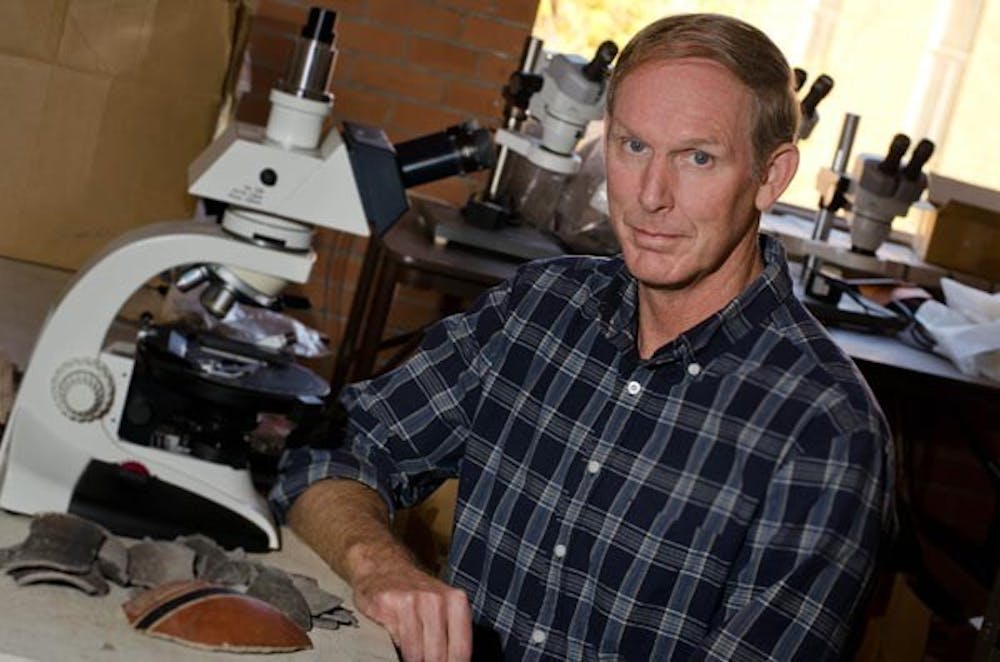An ASU professor has unearthed secrets of an ancient society, right here in Arizona.
David Abbott, associate professor in anthropology, researches ancient ceramics that belonged to the Hohokam, an ancient civilization that lived in the Valley area from approximately 200 B.C. to 1400 A.D.
Abbott has traced the production and trade of Hohokam pottery, made possible because of the unique geology of the Phoenix area.
“It allows us to monitor the interaction between who makes the pots and who consumes them,” Abbott said.
He added that because of the many unique rock types in the Valley area, it is possible to trace ceramics production to within several miles.
Abbott received this year’s Arizona Archaeological Council Award for Contributions to Arizona Archaeology on Oct. 29.
Sophia Kelly, graduate research assistant at ASU, submitted one nomination for Abbott, her Ph.D. adviser.
“He has made significant contributions to what we know about the Hohokam,” Kelly said. “He’s an excellent mentor.”
Kelly said she is very interested in the Hohokam because they were very advanced for their time period, with extensive irrigation systems and a basic market economy.
Abbott’s research in Hohokam pottery began in 1989 during the excavation for the State Route 143 freeway in Phoenix, also known as the Hohokam Expressway.
Before Abbott’s work, scientists had no knowledge on the production and distribution of Hohokam ceramics.
Although ceramics has always been a focus of archaeology in the Southwest, there was once an assumption that natives all made their own ceramics, Abbott said.
Abbott challenged that assumption, and what he found suggested that the Hohokam had developed a bartering system of ceramics, trading with tribes across the whole Valley.
“It shows us the relationships between different populations,” Abbott said.
But there was trouble in paradise around the year 1100, a time that historical records suggest was a time of social and environmental fragmentation, Abbott said.
“People were having tough times with diets and disease,” Abbott said.
He added that during this era, tribes halted much of their cooperation and began to look out only for their local interests.
This strategy, Abbott said, may have been the cause for the Hohokam’s total abandonment of the Phoenix area.
“They became only interested in protecting what they had,” he said. “As a result, they ended up dying off and leaving.”
Abbott’s fellow ASU professors have been impressed by his work, and say he deserved the Archaeological Council Award more than anyone.
“His work is an outstanding example of how archaeology can reach into the past to understand practices of which we have no written record,” said Ben Nelson, professor of anthropology.
ASU anthropology professor Margaret Nelson said Abbott’s work is some of the most innovative in the field.
“He has spent his entire career building our understanding of Hohokam archaeology,” she said. “He is very deserving of this recognition.”
Reach the reporter at alex.ferri@asu.edu





